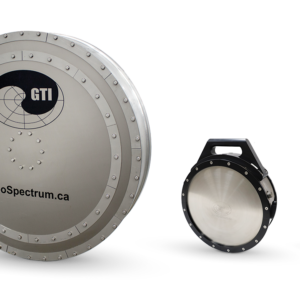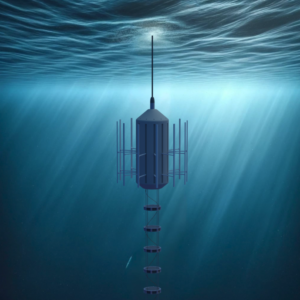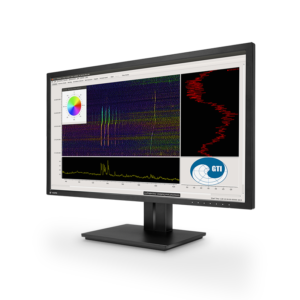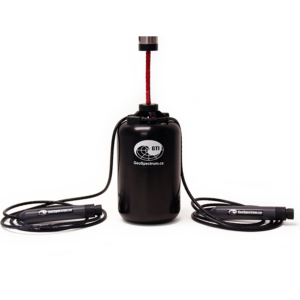Description
SUBMARINE RESCUE
LRAM will become a key resource to the disabled or downed submarine during an engineering casualty. During an engineering casualty a submarine can eject an SSE-launched buoy to be used to communicate with command. Air and sea assets can deploy LRAM to search for and communicate with a casualty submarine.
BROAD OCEAN
LRAM provides on-demand command and control to submarines and UUVs operating in direct and associated support, increasing the value of underwater platforms as fleet assets.
LITTORAL WATERS
The LRAM modem can be scaled to support UUV, SDV and diver communications in the difficult littoral environment up to the surf zone.
In both broad ocean and littoral waters, LRAM provides a robust tactical messaging capability such as targeting assignment change, mission hold/gating, mission/unit status, RV assignment and target cueing.
Range in Deep Water (>1500 m) | Up to 1000 NM |
Range in Shallow Water (<200 m) | Up to 150 NM |
Range Under Ice | Up to 1000 NM |
Doppler Tolerance | ± 33 kt of Doppler |
Max Doppler Tracking Rate (instantaneous) | 66 kt/s |
Equivalent Data Rate | ca. 15 bits/s |
- Provides a highly robust communications capability to dived units, in both the open ocean and the shallows up to the shoreline
- Built-in data security, anti-spoofing, national and coalition access features
- Proven ability to operate in the presence of high-power in-band sonar transmissions
- Buoy-on-station time of 3 days with at least 180 minutes of acoustic transmit
- Up to 6 months duration with a persistent USV such as a Wave Glider
- Performance validated by Royal Navy during TAURUS 09, GE Navy during dedicated Baltic Trial 2011, and US Navy during ICEX 2011
- OPTION: Can be upgraded for 2-way duplex communications
Command Station
- Implemented on standard COTS hardware
- Utilizes IRIDIUM for reach forward connectivity
- Can be fitted with standard VHF-UHF RF link (for use by on-station MPA)
- User interface enables message formatting/select and status monitoring and control of the buoy via IRIDIUM
- Implements message assurance and encryption functions
- Allows the use of Coalition and National keys
- Can be fitted and operated from surface, shore and air units
Receiver Station
- Implemented on standard COTS hardware
- Walk-on system fit available
- Interfaced to sonar via either existing sonar patch panels or dedicated interface
- Decodes and formats received messages for display
- Implements Message Assurance checking and decryption functions
- Allows the use of Coalition and National keys
- Capable of rapid fit to all NATO-operated submarines without modification
- Minimal operator training required
Surface Link
Option A: Submarine Launched Expendable Buoy via SSE or TDU (SLEB)
- Common store capable of submarine, surface or air launch
- Incorporates a SLOT buoy facility
- Incorporates acoustic signal generation algorithms
- Optional acoustic source can also be used for monostatic or multistatic ASW
- Fitted with IRIDIUM satcomm antenna (for control and activation of the buoy)
- Integral GPS enables buoy position to be interrogated by SUBOPAUTH or tactical unit receiver station
- Buoy-on-station life of 3 days with 180 hours of transmit at maximum power available
Option B: Persistent Unmanned Surface Vehicle (USV)
- Incorporates acoustic signal generation algorithms
- Acoustic source can also be used for monostatic or multistatic ASW
- Fitted with IRIDIUM satcomm antenna (for control and activation of the buoy)
- Integral GPS enables buoy position to be interrogated by SUBOPAUTH or tactical unit
- Can be upgraded to include GeoSpectrum’s M518 DIFAR with on-board processing for multi-purpose ASW passive detection
- Duration is persistent, though platform dependent (up to 6 months)
Note: Both the SLEB (Option A) and USV (Option B) variants do not include sensitive components or algorithms such as message assurance or encryption. LRAM implements these functions on a distributed modem architecture where the modem function is split between the SLEB/USV and the Command Station or Receiver Station. No sensitive functions are implemented on the SLEB/USV. All sensitive processing is done on the Command Station and Receive Station which are located at secure locations.











